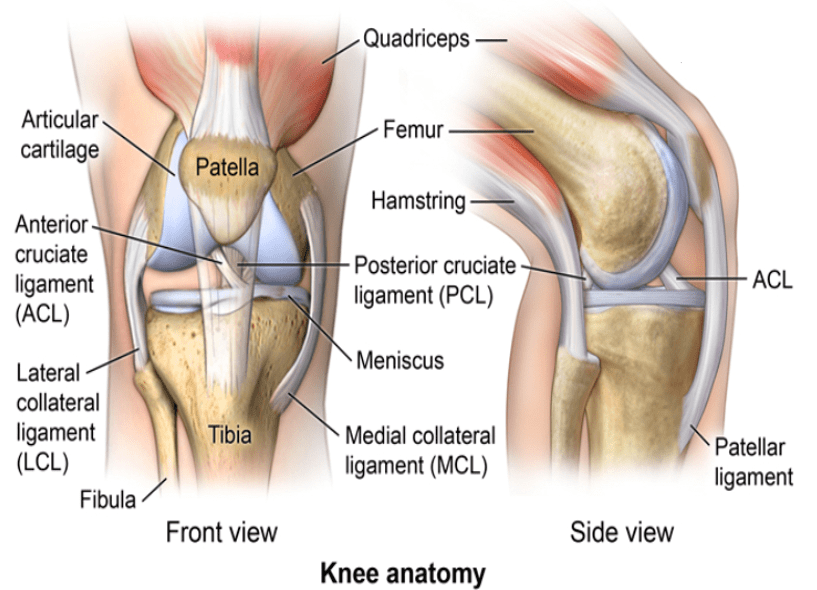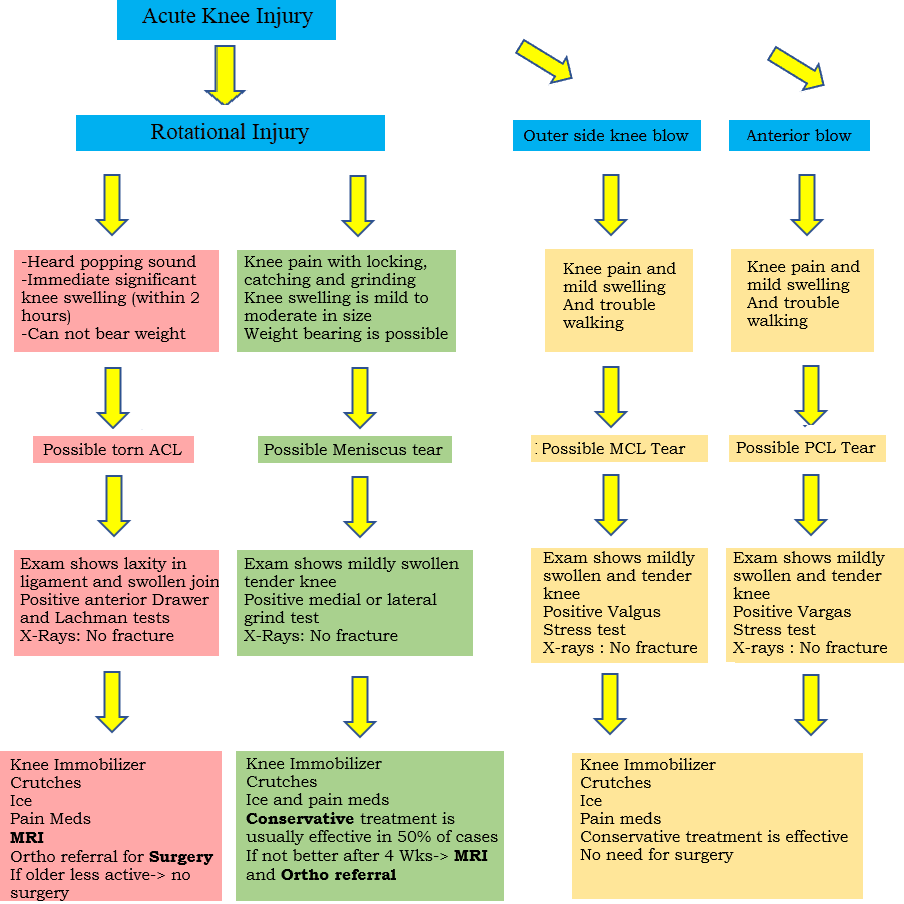Knee Pain
Knee pain can be caused by :
- Knee Arthritis (Osteoarthritis, Gout, Pseudogout, Rheumatoid Arthritis and others)
- Knee Bursitis
- Baker cyst complication
- Patellofemoral Syndrome and Iliotibial Band Syndrome
- Knee trauma
Knee Osteoarthritis:
- This this the most common cause of arthritis
- This is the leading cause of disability in the US affecting nearly 50% of elderly people
- It is caused by deterioration and degradation of joint cartilage and meniscus
- Risk factors include: Older age, female gender, obesity, ethnicity and genetics
- Prior trauma may cause premature onset arthritis
- It causes slowly progressive knee ache and occasional swelling with minimal redness or warmth
- It is worse in the cold damp environment
X-Rays shows joint narrowing, erosions, calcification and osteophytes.
Treatment:
- Early: NSAIDS & Weight reduction
- Later: Steroids joint injection
- Late and advanced affecting mobility: total knee replacement
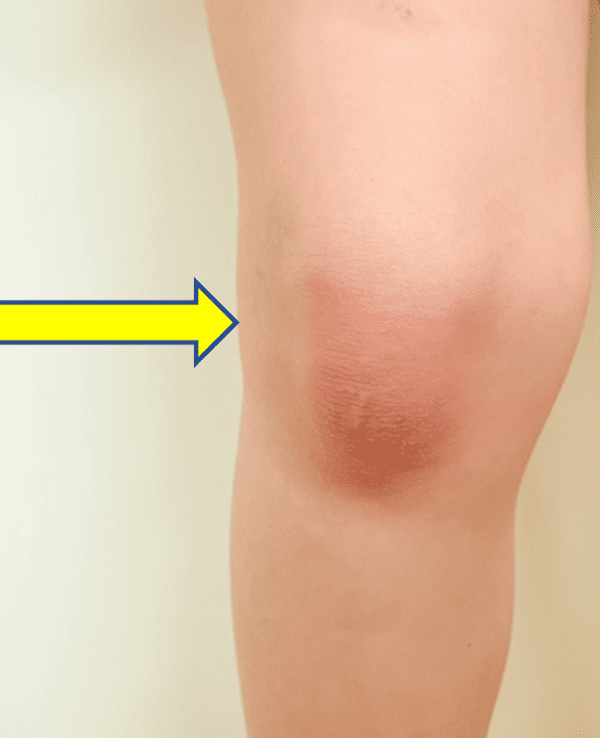
Knee Inflammatory Arthritis:
Inflammatory arthritis is diagnosed when the joint is acutely inflamed (exhibiting intense redness, swelling, warmth and severe tenderness)
- This is usually seen with Gout (Uric acid crystals), Pseudogout (Calcium Pyrophoshate crystals) and auto immune disease like Rheumatoid arthritis.
- Pain is constant and severe
- Pain does not improve with rest.
Diagnosis:
- Joint aspiration may be helpful in ruling out infection and crystals detection to diagnose gout or Pseudogout
- Knee X-rays may show the classic linear joint calcification seen in Pseudogout
- STD testing is recommended in young patients (the most common cause of single joint inflammation is Gonorrhea)
Treatment: Treat the cause, NSAIDs and steroids (oral or intra articular)
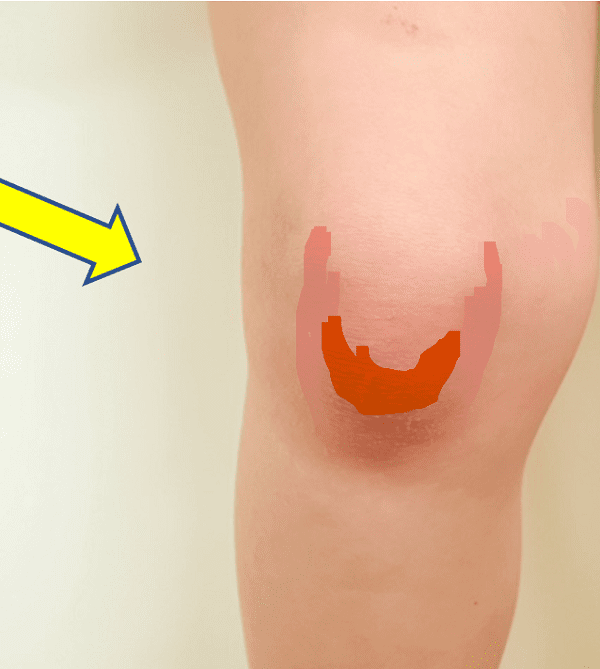
Knee Joint Infection-Septic Joint
- Bacterial infections can invade the joint space and cause serious irreversible joint damage.
- Bacteria can spread from adjacent skin infections, can complicate orthopedic knee procedures or can spread from blood infection
- It causes similar picture to Gout or Rheumatoid
- The joint is angry red, swollen, warm, and quite tender
- You may find signs of skin infection like boil nearby ,abrasion or puncture wound
- Fever and systemic symptoms are usually present (fatigue and aches).
- Joint fluid aspiration for stain and culture is essential
- ER evaluation and Orthopedic consultation is mandatory
Treatment is aggressive IV antibiotics and joint surgical debridement or lavage.
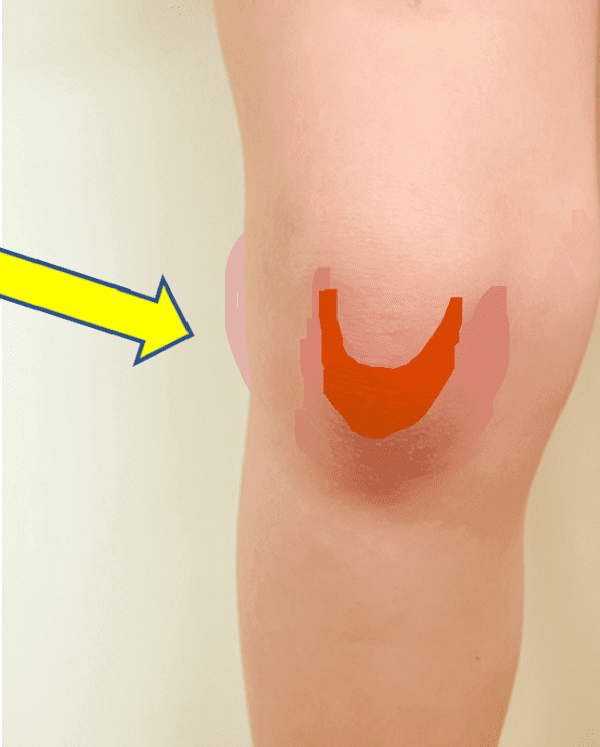
Popliteal (Baker) cyst
This is an abnormal sac of joint fluids bulging behind the knee usually seen in patient with history of knee arthritis or trauma.
These cysts are usually symptoms free. If It it is large it can compresses the posterior Tibial nerve or artery. Ruptured Baker cyst causes sharp pain behind the knee with swollen calf and bruising that might extend to the ankle. Ruptured baker cyst can mimic leg blood clot. Leg venous Doppler is often needed to rule out clots.
Treatment:
- No symptom—>no treatment
- If large (not ruptured)—>joint aspiration and steroid injection
- If pressing on adjacent nerve or artery—> surgical excision
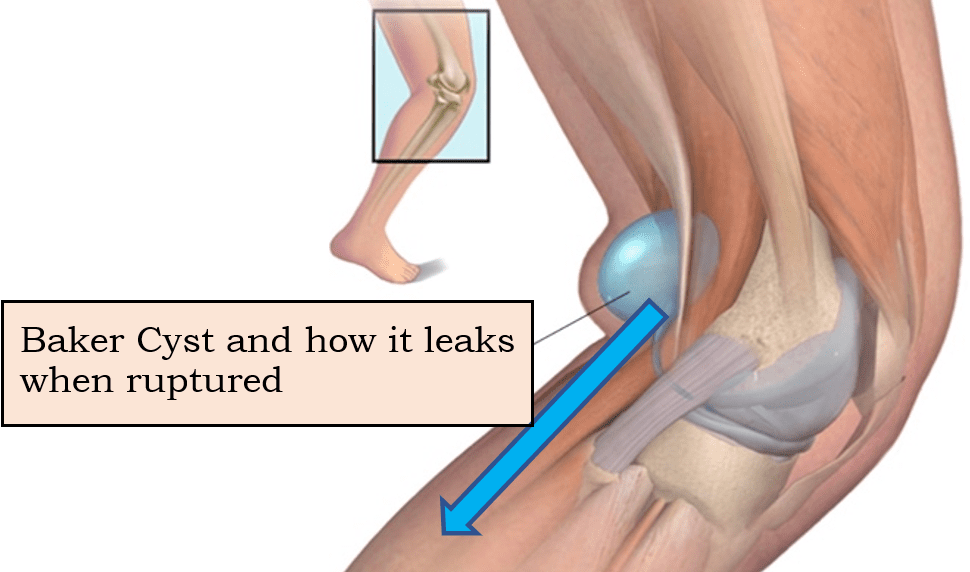
Patellofemoral Pain Syndrome
This is usually caused by abnormal knee cap (Patella) movement when the knee is flexed, it can move inward or outward (usually slides to the inner side and does not stay in the middle).
This causes irritation of the Patella posterior cartilage and results in anterior knee pain and stiffness. Pain is worse with climbing or descending stairs, running and squatting.
Treatment:
NSAIDs, physical Therapy and knee brace to stabilize the knee cap.
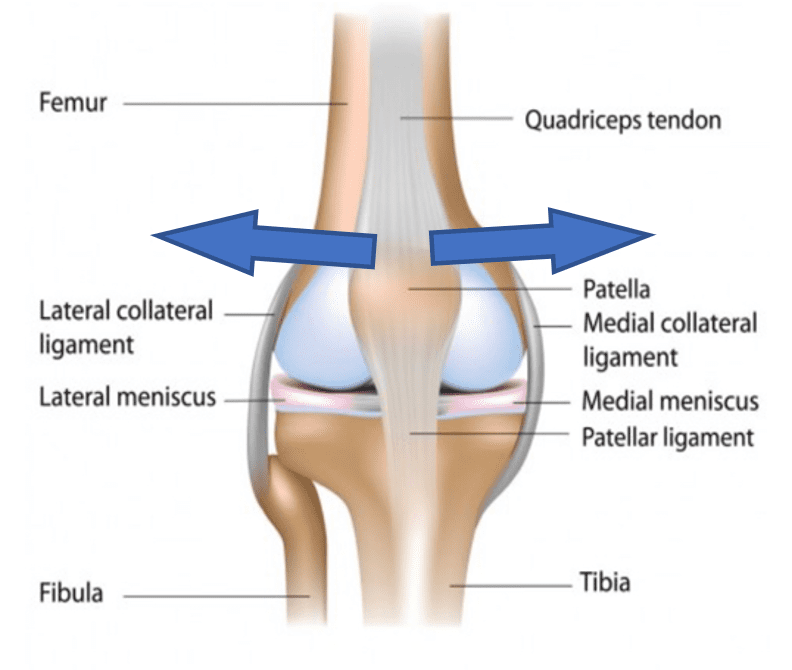
Iliotibial Band Syndrome
- It is caused by stress and inflammation of the tibial band attachment at the knee
- It causes pain just above the knee on the outside surface
- Pain usually starts at the end of exercises involving knee flexion
- Running outdoors and downhills may worsen symptoms
Treatment:
- Activity modification
- Ice
- Stretching and strengthening exercises
- NSAIDs
- Steroids Injection
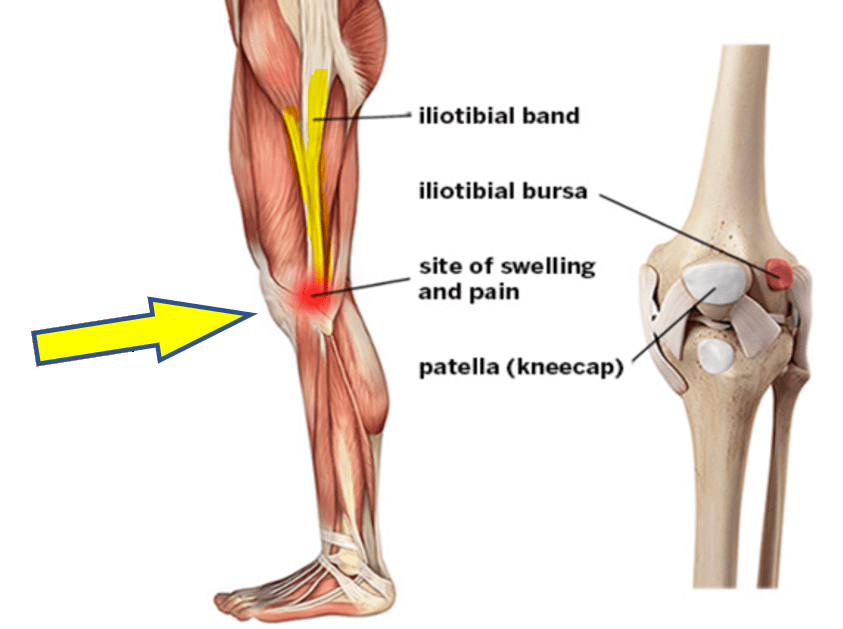
Knee Bursitis
- There are multiple pads protecting the tendons from rubbing against the bone
- The most common bursitis is Prepatellar Bursitis
- It is usually caused by infection spreading from adjacent wounds or scraps,Gout and trauma can be the cause too
- Repetitive bumping of knees (Roofer’s knee & house maid knee) can trigger the inflammation
- It causes localized knee front swelling, redness and warmth (this is in contrast to Knee inflammatory arthritis where the entire knee joint is swollen and inflamed.
- Treatment: immobilization, aspiration and oral antibiotics if infected
- Pes Ansereine Bursitis is usually seen in runners and it causes pain just below the knee and inner area
- It is treated with rest ,activity modification, Quad. Strengthening and NSAIDs
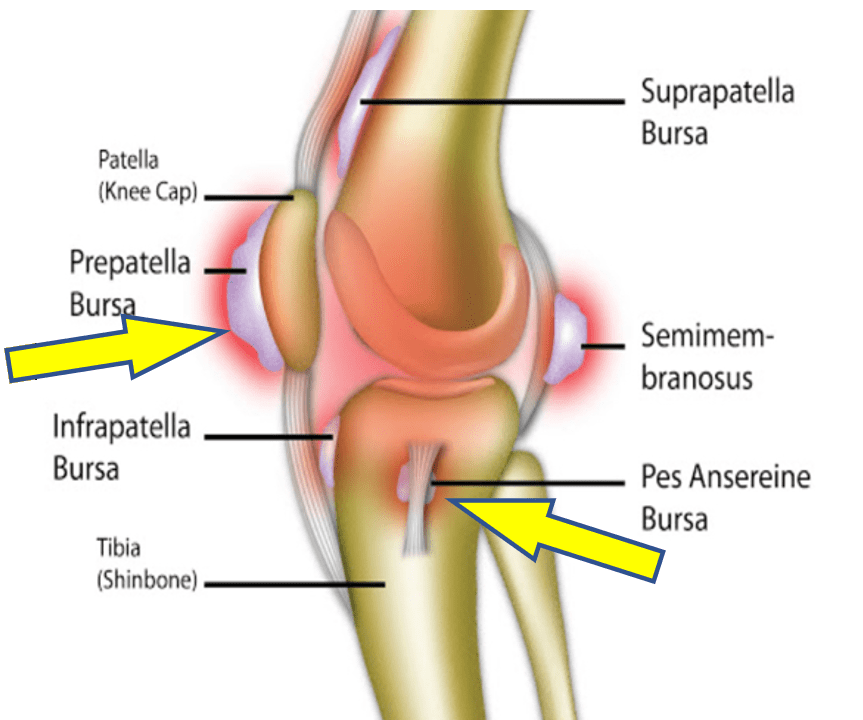
Traumatic Knee Pain
(except fractures)
Acute traumatic knee pain when associated with swelling should raise concerns for Ligament or Meniscus tear (after ruling out a fracture with simple X-Rays.
The following is simplified approach to knee trauma (other than fractures) based on the mechanism of injury
